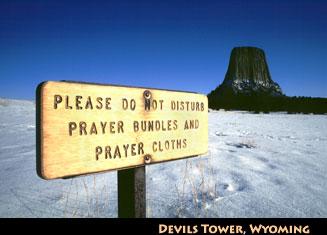 |
| Clown Kachina |
Sacred clowns are found in ancient cultures throughout the world and represent a reversal of the normal order. The most famous of these are the Koyemsi (or Mudheads), the dancing clowns of the Zuni Indians. In the Zuni tradition, the clown frequently disrupts and lampoons some of the most sacred and fundamental rituals. The Cherokee had sacred clowns known as Boogers who performed "Booger dances" around a community fire. But perhaps the most unique type of sacred clown is the Lakota equivalent of Heyoka, a contrarian, jester, and satirist, who speaks, moves and reacts in an opposite fashion to the people around them.
The sacred clown uses satire, folly, and misadventure to portray lessons on inappropriate behavior. The clown satirizes tribal life by acting out and exaggerating improper behavior. The sacred clown's obscene and sacrilegious actions infuse the most important religious ceremonies. Unbound by societal constraints, they help to define the accepted boundaries, rules, and societal guidelines for ethical and moral behavior. Their function can help defuse community tensions by providing their own comical interpretation of the tribe's popular culture, by reinforcing taboos, and by passing on traditions.
Principally, the clown functions both as a mirror and a teacher, using extreme behaviors to mirror others, and forcing them to examine their own doubts, fears, and beliefs. The main function of a sacred clown is to awaken people to innovative and better ways of doing things. The mischievous clown behaves in ways that are contrary to conventional norms in order to violate peoples' expectations. In such paradoxical states, people can assimilate new information quickly, without filtering. Sacred clown's lesson is to stop acting out of habit. We must be willing to plow old habits into the soil in order to cultivate new patterns that enhance our natural growth. Innovative change will revitalize our life and precipitate renewed growth and creativity.
Sometimes we unwittingly cut off the voice of our inner truth, or sense of what is correct; relying instead on old, soul-killing patterns of judgment, control, and distrust. Inner truth reflects, like a mirror, the higher, universal truth that exists in every situation. Yet even when our point of view is at its most positional, narrow and self-righteous, higher truth, often in the guise of the contrarian clown, is there to open the way back to balance and wholeness.
The sacred clown uses satire, folly, and misadventure to portray lessons on inappropriate behavior. The clown satirizes tribal life by acting out and exaggerating improper behavior. The sacred clown's obscene and sacrilegious actions infuse the most important religious ceremonies. Unbound by societal constraints, they help to define the accepted boundaries, rules, and societal guidelines for ethical and moral behavior. Their function can help defuse community tensions by providing their own comical interpretation of the tribe's popular culture, by reinforcing taboos, and by passing on traditions.
Principally, the clown functions both as a mirror and a teacher, using extreme behaviors to mirror others, and forcing them to examine their own doubts, fears, and beliefs. The main function of a sacred clown is to awaken people to innovative and better ways of doing things. The mischievous clown behaves in ways that are contrary to conventional norms in order to violate peoples' expectations. In such paradoxical states, people can assimilate new information quickly, without filtering. Sacred clown's lesson is to stop acting out of habit. We must be willing to plow old habits into the soil in order to cultivate new patterns that enhance our natural growth. Innovative change will revitalize our life and precipitate renewed growth and creativity.
Sometimes we unwittingly cut off the voice of our inner truth, or sense of what is correct; relying instead on old, soul-killing patterns of judgment, control, and distrust. Inner truth reflects, like a mirror, the higher, universal truth that exists in every situation. Yet even when our point of view is at its most positional, narrow and self-righteous, higher truth, often in the guise of the contrarian clown, is there to open the way back to balance and wholeness.










